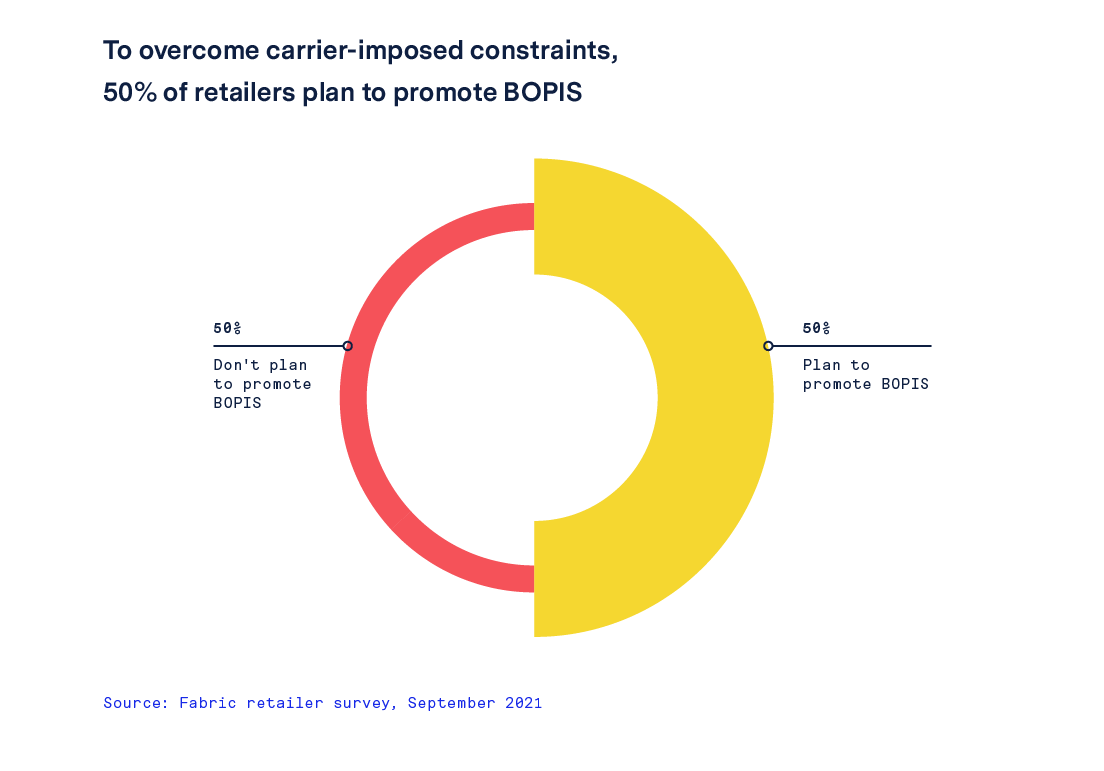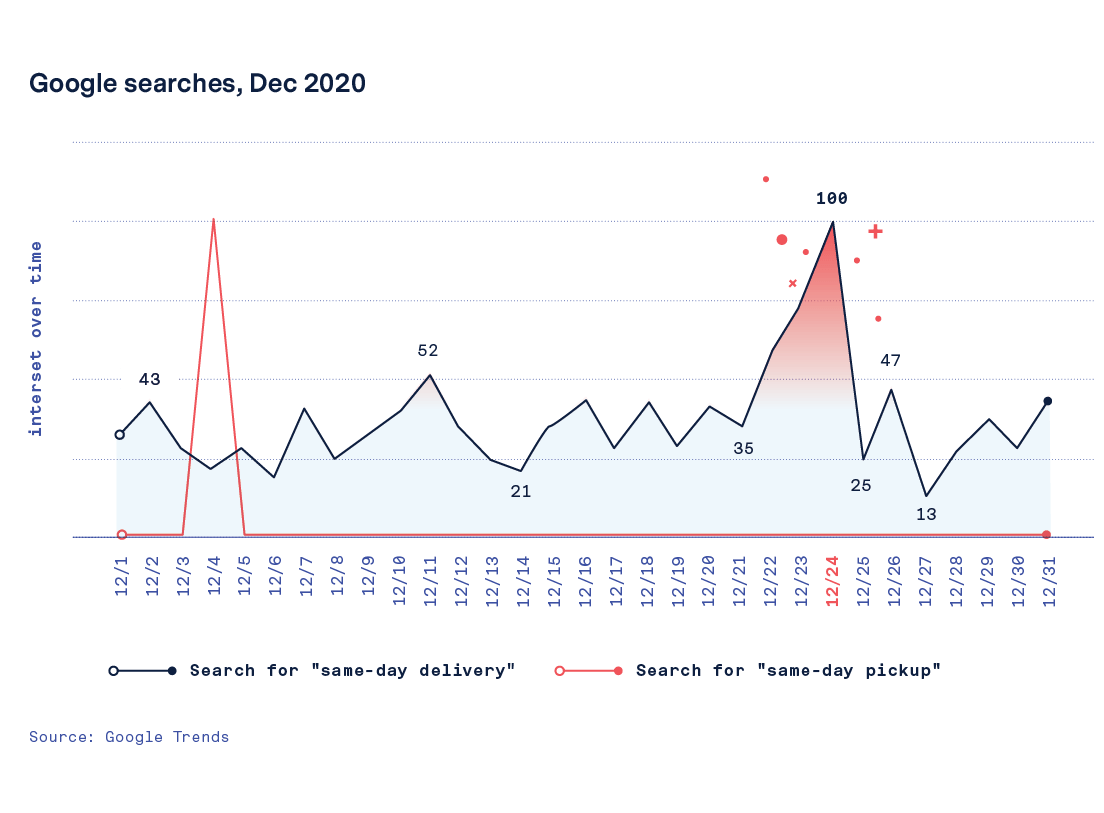Click and collect has been a popular omnichannel strategy for years, but with the onset of the pandemic and sudden rise of e-commerce, BOPIS (Buy Online, Pickup In Store) has become a vital lifeline for retailers and brands. In 2020, the pickup of online orders more than doubled.
While there are important advantages to BOPIS as an omnichannel strategy, according to 200 retailers and brands we surveyed, many are resorting to BOPIS not for its strategic benefits, but as a tactical workaround to the shipping carrier crisis, particularly during peaks.
Carrier constraints lead to losses
Retailers are overwhelmingly dependent on the national shipping carrier companies to dispatch and deliver their online orders. While this is problematic all year round, it’s especially challenging during the holiday session when retailers’ shipping volume exceeds carrier capacity. (Learn just how much shipping carrier constraints cost retailers during the holiday season.)
In order to overcome these carrier-imposed constraints and avoid losses, 50% of retailers we surveyed report that they plan to promote BOPIS this holiday season.
As a tactical workaround, it makes sense: Salesforce data shows that retailers that offered “click and collect” options last year increased their digital revenue by 49% while retailers that didn’t saw only 28% growth.
However, promoting BOPIS can never truly solve the shipping carrier problem – especially not during the holiday season.
Consumers will always want delivery — especially during the holidays
Deloitte’s recent holiday retail survey reveals that consumers overwhelmingly prefer delivery to BOPIS or curbside pickup. 73% of consumers prefer standard delivery and 47% prefer same-day or next-day delivery, while 33% prefer BOPIS and only 21% prefer curbside pickup. That means that BOPIS can complement, but never entirely replace, fast and reliable delivery.
This is supported by data from Google Trends: last year, searches for “same-day delivery” begin to spike on December 22nd and reached peak popularity on Christmas Eve. During the same time period, searches for “same-day pickup” flat-line.
The message is clear:
There will always be a substantial segment of consumers that want last-minute delivery around the holidays, and not being able to provide it will lead to a sizable loss of sales.
It’s no coincidence that Amazon’s share of e-commerce sales tends to drop around Thanksgiving but peaks about one week before Christmas — exactly when consumers have no other delivery alternative.
It’s imperative for brands and retailers to find a long-term, strategic solution that will allow them to offer fast deliveries during peaks and mitigate their overwhelming reliance on shipping carriers.
Distributed fulfillment provides a true strategic solution
The solution is to rethink the entire fulfillment paradigm – and that starts with reimagining the way inventory is distributed. When e-commerce was still a relatively small market, centralized inventory hubs were the most cost-effective way for retailers to approach online order fulfillment. But since online shopping has boomed and consumers have come to expect faster and faster deliveries, that model is no longer fit for purpose.
Retailers would be far better served by a ‘distributed inventory’ approach, where goods are stored in a greater number of hubs across a greater geographical space. This reduces the distance from fulfillment center to end-user, meeting consumers’ growing appetite for speed. Crucially, it also increases the number of carrier options at a retailer’s disposal, whether it’s regional carriers or last-mile courier services, thus mitigating their reliance on the national carriers.



